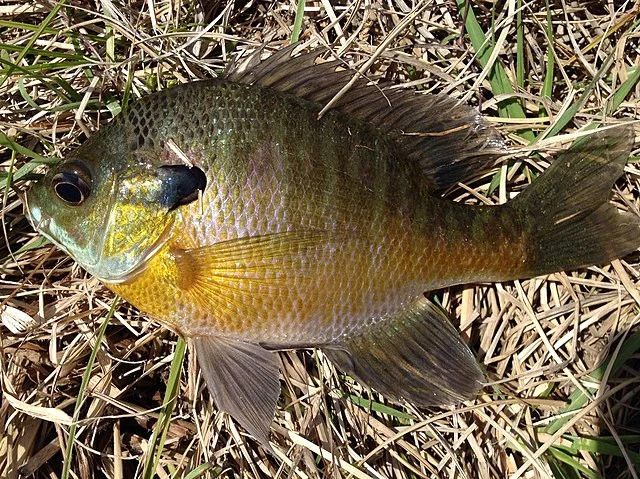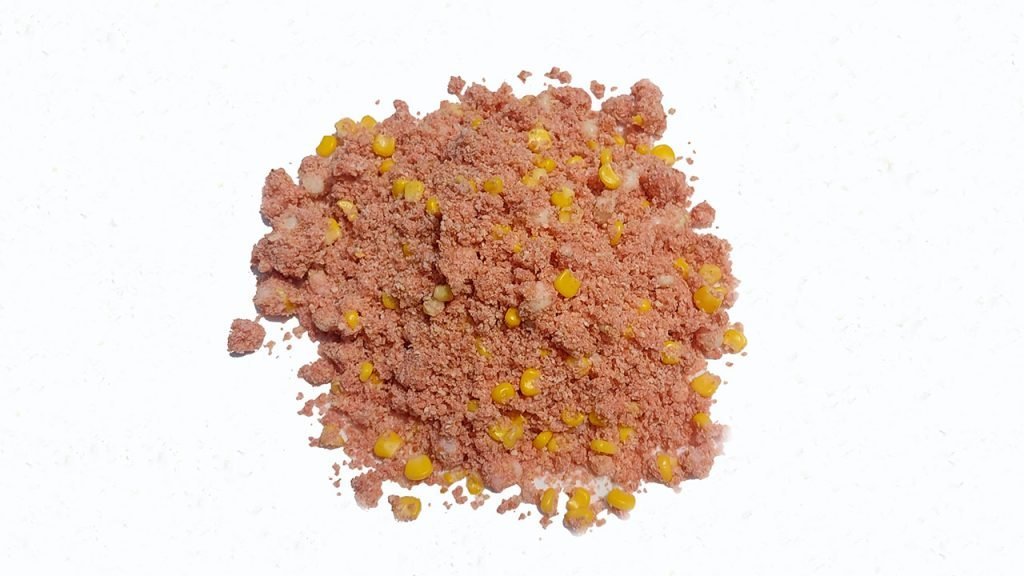How to Catch Bluegill in the Spring: 7 Proven Tips for Success

Spring is one of the best times of the year to catch bluegill. As the water warms up, bluegill become more active and start moving into the shallows to spawn. Whether you’re fishing from the bank or a boat, here’s how to catch bluegill in the spring and maximize your success.
1. Understanding Spring Bluegill Behavior
In spring, learning how to catch bluegill in the spring means understanding their feeding and spawning habits. As water temperatures rise between 60°F and 75°F, bluegill become highly active, moving into the shallows to prepare for spawning. During this time, they are focused on feeding to build energy and protecting their nests from intruders. Here’s what you need to know:
- Spawning Mode: Male bluegill create circular nests in sandy or gravelly areas, often clustering them together. These nests are typically found in water 1 to 4 feet deep. Males guard these nests aggressively, making them more likely to strike at anything that appears as a threat.
- Feeding Frenzy: Before and during spawning, bluegill feed heavily on insects, larvae, and small invertebrates to maintain energy levels. They become more aggressive, making this a prime time for anglers to capitalize on their bold behavior.
- Peak Activity Times: Early morning and late afternoon are the best times to catch bluegill during the spring. They are less active during the hottest part of the day, so plan your fishing trips accordingly.
- Water Clarity Matters: Since bluegill are visual feeders, they prefer clearer waters during the spring. If the water is murky or disturbed, they may move to slightly deeper areas where visibility improves.
2. Best Spring Baits for Bluegill
When learning how to catch bluegill in the spring, choosing the right bait is crucial. Bluegill are opportunistic feeders, but they become especially aggressive when guarding their nests. During the spring, they are more likely to attack anything that resembles a threat to their territory. Here are the best baits to use:
- Live Bait: Worms, crickets, and waxworms are particularly effective during spring. Since bluegill are feeding heavily, presenting live bait with natural movement will trigger aggressive strikes. Hook these baits lightly to keep them lively and appealing.
- Artificial Lures: Small jigs, curly tail grubs, and mini spinnerbaits work well when presented near nesting sites. Bright colors such as chartreuse, pink, and white can provoke strikes, especially when jigged slowly near the bottom.
- Flies for Fly Fishing: Bluegill respond well to wet flies, poppers, and nymphs during the spring, as these mimic the insects they commonly feed on. Focus on shallow areas where bluegill are actively guarding their nests.
- Scented Soft Plastics: Adding scent to your soft plastics can make them more attractive, especially when the fish are hesitant. Try using small scented grubs or tubes to mimic natural prey.
- Small Spinners: These create vibration and flash that can provoke territorial strikes. Cast near spawning beds and retrieve slowly to draw their attention.
3. Effective Techniques for Spring Bluegill Fishing

The key to how to catch bluegill in the spring is targeting the right areas with the right techniques. Bluegill in the spring are aggressive but also cautious, especially around their nests. Here are some proven methods:
- Bobber Fishing Near Nests: Attach a small bobber 1-2 feet above your bait and cast near the beds. Allow the bait to settle and watch for any slight movement, as bluegill will often strike without pulling the bobber completely under. We recommend using slip bobbers which you can find HERE.
(As an Amazon Associate, I earn from qualifying purchases.) - Slow Jigging Around Structure: Drop a small jig tipped with live bait or a soft plastic near submerged vegetation or rock piles. Use a gentle jigging motion to entice bluegill, as rapid movements can scare them off.
- Fly Fishing for Surface Bites: During warm, sunny afternoons, use poppers or small floating flies near the shallows. The splash and movement can draw aggressive strikes from spawning males.
- Side Casting with Spinners: Stand a bit farther from the shoreline and cast at an angle to the nests. This technique minimizes disturbance and allows your lure to pass through the bluegill’s territory naturally.
- Vertical Jigging from a Boat: Position your boat near shallow flats or spawning beds and drop your jig vertically. Lift the rod tip slowly and let the jig flutter back down to mimic small prey.
4. Best Spots to Find Spring Bluegill
Spring bluegill are drawn to specific habitats as they prepare to spawn. Knowing how to catch bluegill in the spring means targeting these prime locations:
- Shallow, Warm Waters: Bluegill move to the warmest areas of ponds and lakes, often in coves or along sunny shorelines. They prefer water depths between 1 and 4 feet, especially when setting up nests.
- Vegetation and Cover: Bluegill love areas with submerged grasses, lily pads, and brush piles. These spots offer protection from predators and abundant food. Cast along the edges of these areas to find feeding fish.
- Gravel and Sandy Flats: During spawning, male bluegill create circular beds on sandy or gravelly bottoms. These areas are often found in coves, around creek mouths, or near sheltered shorelines.
- Near Drop-offs: After spawning, bluegill may move slightly deeper but remain near drop-offs or submerged ledges. Focus your efforts on these transitional areas during late spring.
- Shade and Overhanging Trees: On sunny days, bluegill often seek shaded areas under trees, docks, or bridges. Fish these areas in the afternoon when the sun is high.
5. Tips for Maximizing Your Spring Catch
To make the most of your spring bluegill fishing trips, keep these tips in mind:
- Be Patient and Observant: Take your time scanning shallow waters for signs of nests and fish movement.
- Avoid Casting Shadows: Stay low and avoid creating shadows that might spook nesting bluegill.
- Experiment with Colors: If one color isn’t working, switch to a different shade to see if it triggers more bites.
- Try Multiple Depths: If you’re not getting bites, adjust your bobber depth or switch to jigging to find active fish.
- Use Light Gear: A light or ultralight rod, paired with a 4-6 lb test line, ensures sensitivity and makes fighting bluegill more exciting.
Spring is a prime season for bluegill fishing, thanks to their increased activity and spawning behavior. Learning how to catch bluegill in the spring means being adaptable. Adjust your tactics as conditions change, and don’t hesitate to try different approaches. The more flexible you are, the more successful your fishing trip will be!
Happy fishing, and remember to practice catch and release when necessary to maintain healthy bluegill populations! If you want to learn how to properly take care of fish, check out our fish care page.
💡Takeaways
- 📌Spring Means SpawningBluegill move to shallow waters between 60°F and 75°F to feed and guard their nests, making them easier to catch.
- 📌Target Nesting MalesMales guard circular nests in 1 to 4 feet of water and aggressively strike anything near, especially during spawning.
- 📌Live Bait Gets ResultsWorms, crickets, and waxworms are excellent springtime choices. Hook them lightly to keep their movement natural.
- 📌Try Bright Lures TooChartreuse, white, and pink jigs or spinnerbaits provoke aggressive strikes near bluegill beds.
- 📌Don’t Overlook Fly FishingFloating flies and poppers work great in shallow waters where bluegill are feeding on insects.
- 📌Adjust for Water ClarityIn clear water, bluegill are more active and visual. In murky conditions, go slightly deeper for better results.
- 📌Use a Bobber RigA slip bobber with live bait lets you hover right over the nest zone and spot subtle bites easily.
- 📌Jig Slowly Near CoverBluegill prefer cover like grass beds, brush piles, and docks. Drop your jig close and move it gently.
- 📌Look for Gravel FlatsSandy or gravelly bottoms in shallow coves are prime spawning grounds. Scan for circular beds or swirls.
- 📌Fish Early or LateBluegill bite best at dawn and dusk. Midday heat makes them sluggish or forces them into shade.
- 📌Go Light for More FunUse ultralight gear with 4 to 6 lb test for better sensitivity and a more exciting fight.
What is the best bait for bluegill in the spring?
The best bait for bluegill in the spring includes live options like worms, crickets, and waxworms. During spawning, bluegill are aggressive and territorial, making live bait especially effective. Artificial baits like small jigs, soft plastics, and brightly colored grubs also work well when fished near their nesting sites. Adding scent to your bait can increase your chances of attracting bites.
How do you catch bluegill in the spring?
To catch bluegill in the spring, focus on shallow, warm waters where they are spawning. Use light tackle with a small bobber, size 8-12 hooks, and live bait such as worms or crickets. Cast near submerged structures like weed beds, docks, or sandy flats where bluegill build their nests. The best times to fish are early morning and late afternoon. Slow, gentle jigging and bobber fishing are effective techniques during this period.
What is the best rig for bluegill fishing?
The best rig for bluegill fishing is a simple bobber rig with a light line (4-8 lb test) and a small hook (size 8-12). Attach the bobber 1-2 feet above the bait to keep it suspended at the right depth. You can also use a drop shot rig when fishing deeper waters or when bluegill are holding near the bottom. Keep the setup light and sensitive to detect even the most subtle bites.
What do bluegill eat in spring?
In the spring, bluegill primarily feed on insects, larvae, and small aquatic invertebrates. Their diet includes worms, nymphs, small crustaceans, and fly larvae. They also consume small fish fry and algae when other food sources are scarce. Matching your bait to these natural food sources will significantly increase your success.
What time of day do bluegill bite best?
Bluegill bite best during the early morning and late afternoon when temperatures are cooler and light levels are lower. During the spawning period in spring, they may bite throughout the day, especially if they are actively guarding their nests. On sunny days, focus on shaded areas or deeper water where they may be holding to avoid direct sunlight.
What is the main predator of a bluegill?
The main predators of bluegill include larger fish such as bass, pike, and catfish. Birds like herons and ospreys also prey on bluegill, especially in shallow waters. During the spawning season, raccoons and turtles may raid nests to feed on eggs. Bluegill protect their nests aggressively to deter smaller predators, but they remain vulnerable to larger fish and wading birds.


